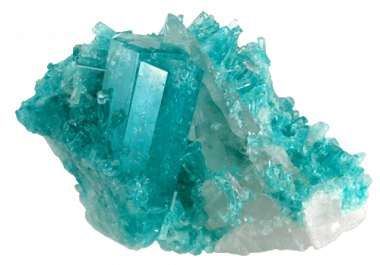open 10 am - 7 pm
laboratory is closed
Aquamarine
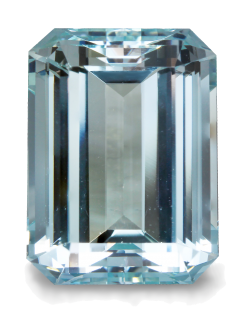
Aquamarine is a variety of the mineral beryl, colored in a blue-green color with all the variety of tonal hues. This variety of beryl is separated from topaz by Anselm Boethius de Boot of Bruges (circa 1550 - 21.06.1632) in the work "Gemmarum et lapidum historia", published in 1609. The name "aquamarine" is derived from two Latin words: aqua, meaning "water" and marina, meaning "of the sea" and goes back to the definition of blue transparent stones given by Pliny the Elder.
Chemistry: Be3Al2[Si6O18];
Crystal system: Hexagonal, dihexagonal-dipyramidal crystal class (point symmetry group);
Color: Blue, blue with a green hue to blue-green, deep blue. Blue color is due to several forms of the iron ions that are presented in the crystal system of beryl:
- isomorphic displace of Al3+ ions by Fe2+ ions in octahedral site (Fe62+);
- pair Fe42+ – Fe62+ (the Fe42+ ions are in the interstitial position);
- pair Fe62+ – Fe63+ in octahedral site.
Identification properties
| Physical properties | |
|---|---|
| Mohs hardness: | 7,5 – 8 |
| Density: | 2.67 – 2.75 g/cm3 |
| Cleavage: | imperfect |
| Fracture: | conchoidal |
| Optical properties | |
|---|---|
| Optical character: | anisotropic, monoaxial *, negative |
| Refractive Index: | no =1.570 – 1.596, ne =1.564 – 1.587 |
| Birefringence: | 0.004 – 0.009 |
| Pleochroism: | weak to distinct |
| Dispertion: | 0.014 (BG) |
| Luster: | vitreous |
* Sometimes anomalously biaxial (which refers to twins, and distorted crystals).
Inclusions and structural inhomogeneities
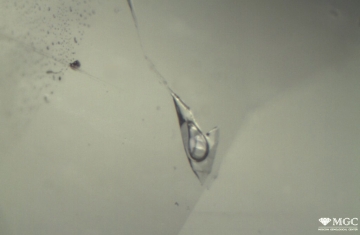

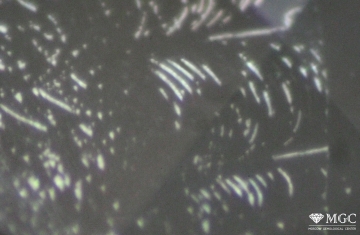
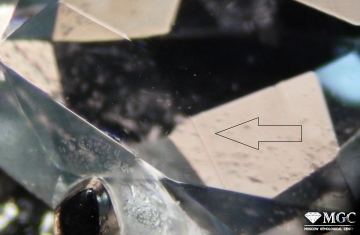
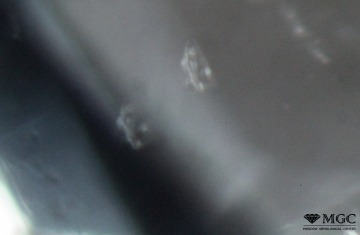
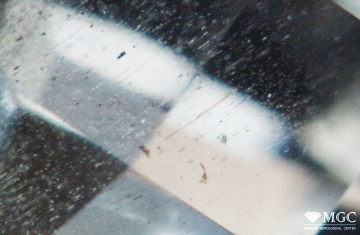
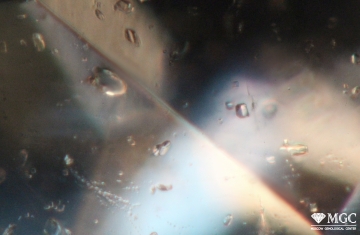
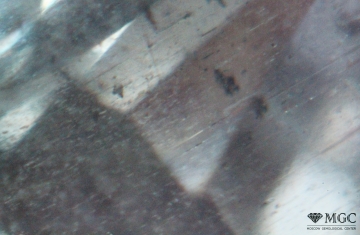
Gem basic treatments
| Treatment | Goal |
|---|---|
| Heat treatment | Removing greenish and grayish color component |
| High temperature treatment under high pressure conditions | Enhancing the color properties or adding properties |
| Irradiation treatment; irradiation treatment in combination with high-temperature treatment | Enhancing the color properties |
| Impregnation with polymer compounds with a refractive index close to aquamarine to fill the open cavities (oil, wax, and polymer) | Improving the apparent clarity of gem material |
| Surface coating by applying a various coloring agent | Altering the apparent color of gem material |
Synthetic or Imitation gem materials
Synthetic aquamarine for jewelry is produced in limited quantities. It is synthesized mainly by "hydrothermal" technique, which is based on the principle of temperature gradient.
The most commonly encountered synthetic aquamarine is as follows:
- thermally and/or irradiation-treated beryl;
- beryl colored in aquamarine color from the surface or over open cavities;
- beryl treated by "ion impregnation" - very rarely;
- beryl treated as the build-up of a layer of synthetic aquamarine - very rare;
- natural minerals with similar color properties, as a rule - blue topaz;
- synthetic minerals with blue hue (quartz, spinel, garnet, corundum);
- assembled stones - doublets and triplets: aquamarine + beryl, aquamarine + quartz, beryl + glass, beryl + dye + substrate;
- beryl glass;
- color glass.
* Methods of color treatment by the "ion implantation" technique, complex ennobling by hydrothermal build-up of the surface layer of synthetic aquamarine are also described in the literature.


